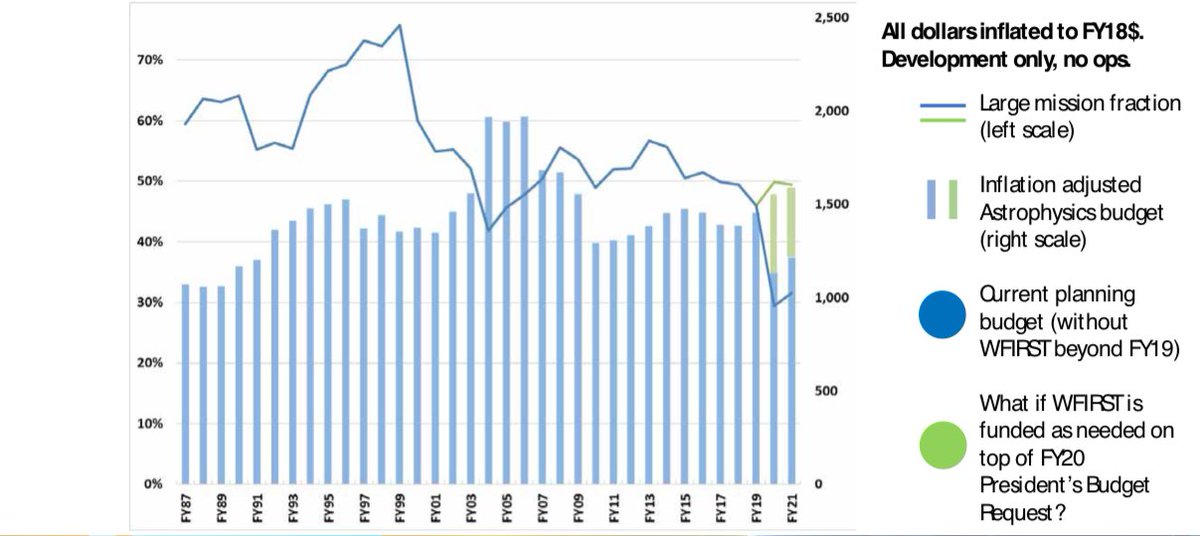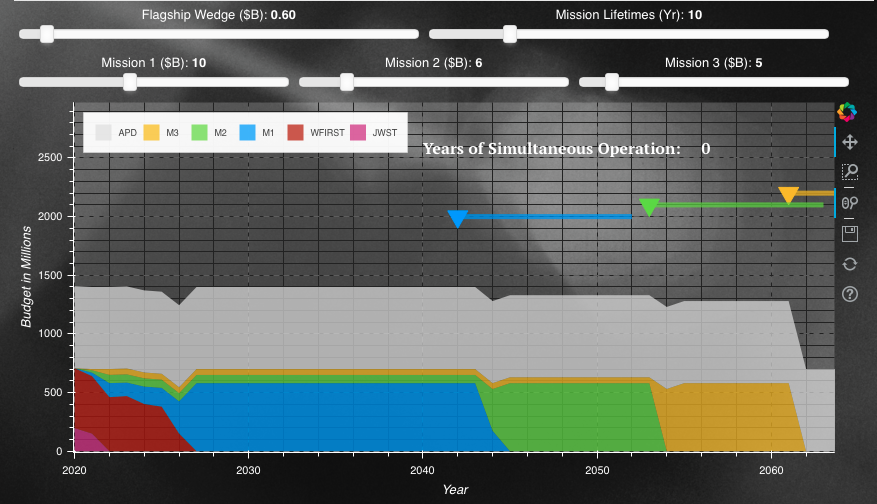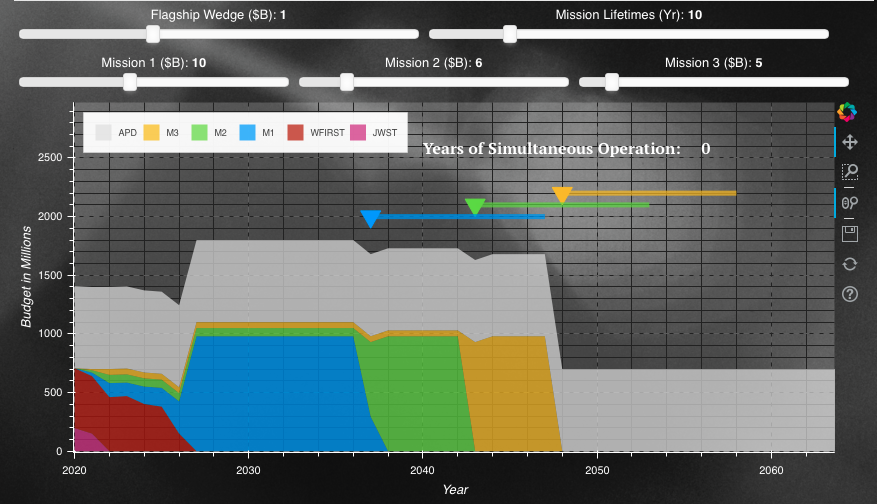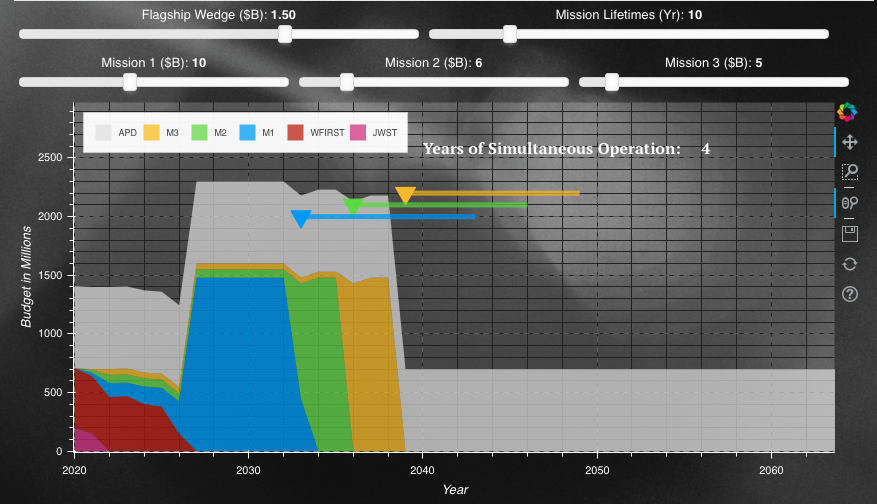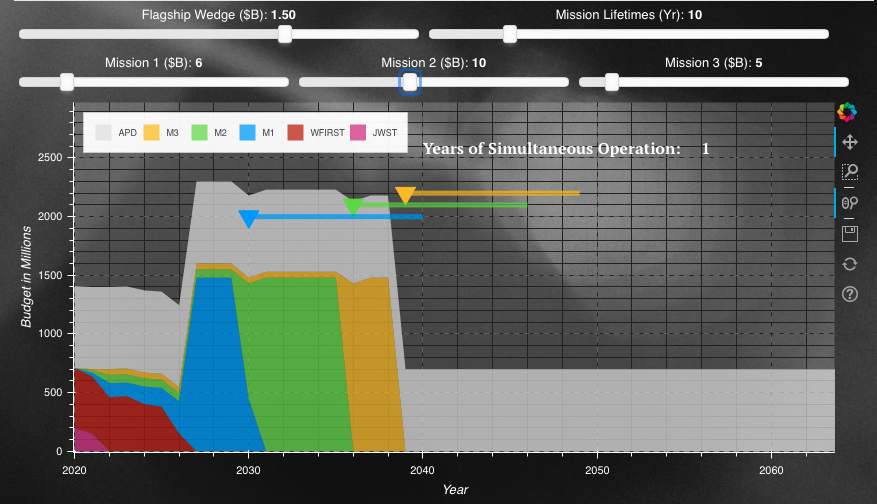Sitting here in the never-ending Zoom meeting hellscape that work has become, I took a few minutes off to mull on something. About flagship missions and our ability to fund them, and how we can build the next great observatories. This thread is the result. (1/ )
First, let’s note we are at a very interesting time, and no, I don’t mean COVID. At this moment, four things are roughly coincident: 1) Chandra& #39;s 20th, 2) Hubble& #39;s 30th, 3) Spitzer& #39;s end, and 4) Astro2020 (2/)
Chandra, Hubble, and Spitzer constitute 3/4 of NASA& #39;s "Great Observatories" (Compton was the 4th, and its mission ended in 2000). By far, the impact of these missions together exceeds the sum of the parts (3/)
But the Great Observatories are slowly coming to their end. Spitzer ended its mission this year, and although nothing is certain, Hubble and Chandra are rather unlikely to extend their lifetimes by decades more (4/)
The good news, as many know, is that we haven& #39;t rested on our laurels. This year, the Decadal survey gets to consider the Next Great Observatories. And this is where my rant really begins. (5/)
Disclosure: I am a member of the #LUVOIR team. So yes, this rant is partially self-serving. But if you know me, you also know that I care more about the future of our field than I do any one mission, any one subject. (6/)
Which is why I& #39;m itching for a fight. I& #39;m itching because an oft-repeated response to the Next Great Observatories, be it any one mission or the fleet, is & #39;We can& #39;t afford it!& #39; (7/)
With all due respect to those that say so: I believe you& #39;re wrong. And I& #39;d like to show you why. Buckle up, it& #39;s time for charts and unbridled optimism (8/)
Let& #39;s start with a chart many of you have seen. It comes from @PHertzNASA and I most recently saw it in an #AAAC meeting. It shows what fraction of the Astrophysics Division (APD) budget goes to flagships (9/)
What do we learn? About half of the APD budget (ignoring the current Budget request to yet again cancel WFIRST) goes to flagships. Particularly in the last two decades. So much for the argument that flagships eat everything. (10/)
Because quite a few other missions of different scales have been formulated and flown in those two decades. Flagships don& #39;t eat other missions. Flagships delay other flagships (11/)
Ok, so what does that mean after WFIRST? (I assume here it will be launched, consistent with the Phase-C time/cost estimate). It means we can build another flagship, and start real spending in the later 2020s. (12/)
Now here& #39;s where a fun tool developed by Jason Tumlinson comes in. Jason and others used an earlier version of this tool in an Astro2020 APC white paper ( …https://113qx216in8z1kdeyi404hgf-wpengine.netdna-ssl.com/wp-content/uploads/2019/09/173_tumlinson.pdf)">https://113qx216in8z1kdeyi404hgf-wpengine.netdna-ssl.com/wp-conten... (13/)
In the new version of the tool, one can play around with the & #39;Flagship Wedge& #39;, a.k.a. the amount of money per year you allocate for flagships at APD. It defaults to $600M/yr, roughly in line with the status quo. (14/)
Ok, what does it show? If you have three flagships, at $10B, $6B, and $5B in cost, how long does it take to build all three, and how long are all three operating *together* (15/)
Put bluntly, the & #39;status quo& #39; does not enable the Next great observatories. Ok, so we should pack up our stuff and give up, right? Wrong. Hell no. Here& #39;s why. Allow me to introduce you to my friend the recent Planetary Science Division Budget (16/)
See what it did there? It grew. By a lot. In fact, it *doubled*. Let& #39;s see what that kind of effect has. Let& #39;s add another $0.4B to the status quo wedge. (17/)
Now we& #39;re making progress. No overlap in time yet, but All three missions are complete before 2050! Even better, let& #39;s add 0.9B to the status quo wedge. (18/)
Something wonderful happens: All four missions operate simultaneously now (assuming a mission lifetime of 10 years. Go ahead, tell me that& #39;s not reasonable given say Chandra& #39;s 20 years....) (19/)
You can, and should, argue with the spending profiles, or the assumption that the work can be done in time, but I don& #39;t care. The underlying message is still in place: By changing the wedge, we can enable truly great things. (20/)
Why did I put the more expensive flagship first? Because that maximizes fleet overlap time. If I switch the order of M1 and M2, I get this: (21/)
I’ll give you the link in a bit so you can play with the sider bars, but will go ahead and do what some of you are thinking, and max our M1 to $20B because you think I& #39;m being dumb about flagship costs. Here you go. (22/)
That has the effect of pushing the pile to the right in schedule, but the benefit remains: you have the Next Great Observatories. So why am I making this rant? There& #39;s nothing magic in these plots. I& #39;m making it because I worried we& #39;ve lost ambition (23/)
I’m worried that as a community we presume we can never learn from mistakes, never plan differently, never change the status quo, and never grow a wedge. I think that presumption is wrong. Wrong, and dangerous. (24/)
That presumption threatens not just this upcoming decade, but easily the next three after. It threatens our ability to maintain our brain trust, our engineering capabilities, our partnerships around the world. All for fear of a flat budget wedge a decade from now.(25/)
"But John, you can& #39;t honestly be delusional and think you can add a billion dollars to APD!!!". Go ahead, scroll up, and look at the PSD budget again and tell me I can& #39;t. The primary thing stopping us from doing so is ourselves….(26/)
And the story we tell. PSD told Congress a strong story, and the money came. PSD was not immune to mission delays, failures, or budget creep. But they kept telling their story. A compelling one. (27/)
And damnit, we have an *amazing* story to tell. Go here: https://www.greatobservatories.org"> https://www.greatobservatories.org Look at those wonderful pieces of work. Look at the visionary, transformative, civilization-changing science they describe, and then tell me with a straight face we don’t have a good story. (28/)
But we have to tell it, we have to fight for it, and *we have to stick with it*. I may be worried, but I still believe we can be bold. I still believe we can do this. I believe we can make the Next Great Observatories. (29/)
believe we can do this and have a balanced portfolio. I believe we can build the missions that will do science we haven’t yet dreamed of. I hope you do too. Let’s be ambitious together. (30/)
Let’s fight for the science we’ve dreamed of. It’s waiting for us. If we’re bold. (31/)
If anyone has interest, I can go on a different rant where I go on about how I think we can leverage our assets better, particularly at NASA, but I think that’s enough blather for one rant, and I’m sure I’m late for another zoom meeting (32/)
I’ll close with Kennedy: “Even though I realize that this is, in some measure, an act of faith and vision, for we do not now know what benefits await us…and to do all this, and do it right…then we must be bold.” (33/)
(the tool I used, in fact an updated version, can be found here: http://www.greatobservatories.org/affordability )">https://www.greatobservatories.org/affordabi...

 Read on Twitter
Read on Twitter